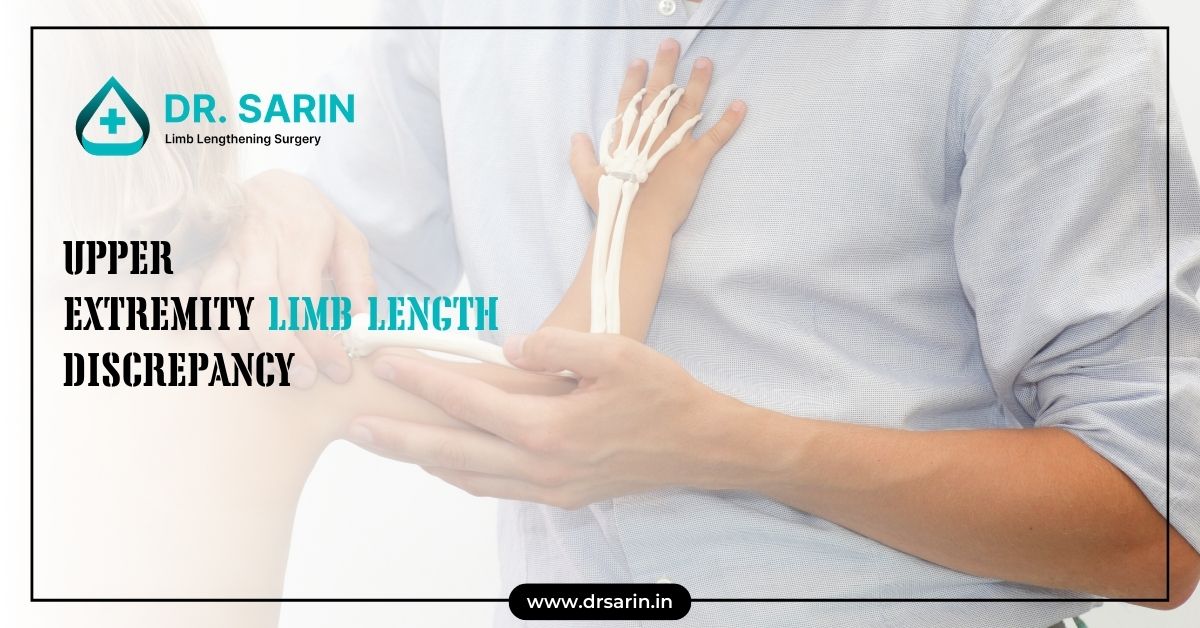The upper extremity, comprising the arm, forearm, and hand, is a complex structure that facilitates a wide range of motions and functions. The skeletal anatomy includes the humerus, radius, and ulna, which are supported by a network of muscles, tendons, ligaments, and nerves. Proper alignment and length of these bones are crucial for optimal function and symmetry.
Description
Upper extremity limb length discrepancy (UELLD) refers to a condition where there is a noticeable difference in the length of the arms. This disparity can impact both cosmetic appearance and functional abilities, leading to challenges in performing daily activities. The discrepancy may be mild or severe, and its impact on the individual can vary widely. Accurate diagnosis and appropriate treatment are essential for managing the condition effectively.
Cause
Congenital Upper Limb Length Discrepancy
Congenital UELLD is present at birth and can result from a variety of factors, including genetic mutations, developmental disturbances, or conditions affecting fetal growth. Common congenital conditions associated with UELLD include:
Fibular Hemimelia: A rare congenital condition where part or all of the fibula bone is missing.
Amniotic Band Syndrome: A condition caused by entanglement of the fetal limbs in fibrous amniotic bands, leading to restricted growth and development.
Radial Club Hand: A condition characterized by the underdevelopment or absence of the radius bone, resulting in a shorter forearm.
Congenital UELLD is often detected early in life, allowing for timely intervention and management.
Acquired Limb Length Discrepancy
Acquired UELLD develops after birth due to various factors, such as trauma, infection, or medical conditions. Common causes include:
Trauma: Fractures or injuries to the growth plates in children can disrupt normal bone growth, leading to length discrepancies. Severe fractures may require surgical intervention to restore limb length and function.
Infections: Bone infections (osteomyelitis) can damage growth plates or bone tissue, leading to discrepancies in limb length.
Tumors: Both benign and malignant bone tumors can affect bone growth and development, resulting in length discrepancies.
Neurological Conditions: Conditions like cerebral palsy can lead to muscle imbalances and skeletal deformities, contributing to UELLD.
Symptoms
The symptoms of UELLD can vary based on the severity of the discrepancy and the underlying cause. Common symptoms include:
Visible Difference in Arm Length: One arm may appear noticeably shorter or longer than the other.
Functional Limitations: Difficulty in performing tasks that require symmetrical arm movement, such as lifting, carrying, or reaching.
Musculoskeletal Pain: Discrepancies in limb length can lead to compensatory movements and postural imbalances, causing pain in the shoulders, back, or neck.
Asymmetrical Muscle Development: The shorter limb may develop differently in terms of muscle mass and strength compared to the longer limb.
Psychosocial Impact: Visible limb length discrepancies can affect self-esteem and body image, particularly in children and adolescents.
Diagnosis and Treatment
Diagnosis of UELLD typically involves a thorough clinical examination, medical history review, and imaging studies such as X-rays or MRI scans to determine the extent and cause of the discrepancy. Treatment options depend on the severity of the condition and may include:
Non-Surgical Management: For mild discrepancies, non-surgical approaches such as physical therapy, orthotics, and shoe lifts can help manage symptoms and improve function.
Surgical Intervention: In cases of severe UELLD, surgical procedures like limb lengthening, bone grafting, or corrective osteotomies may be necessary to restore symmetry and function.
Early diagnosis and intervention are crucial in managing UELLD effectively, minimizing complications, and improving the quality of life for affected individuals.
Also Read:



